x
.
Pier 8
Chilly here today, but beautiful as always, always in a new way. Looking east from Pier 8, where the tugs are snugged at night, those domes you see are grain storage bins. Beyond, behind the laker, are the mills, half-idled now as U.S. Steel gets on with killing Stelco, the homegrown competitor it bought a few years back. Their latest stunt is to persuade a judge to relieve them of paying certain medical benefits to their pensioners. We inhabit a lampoon of capitalism. Marx would certainly get a laugh out of the view: the mountain of capital left to rust unused, and just beyond, a second mountain, still alive with fire and action and thriving alongside the corpse of its former rival. I sometimes think of writing him, you know, the way Auden wrote to Byron, to give him an update. But I kind of think that he would be impatient with whiny epistles, and just want us to get the hell on with the job of removing “creative destruction” from our horizon once and for all.
They plan to build condos on this pier. (They have a lot of plans these days.) They better build ’em good, because the westerlies that come across here in winter are enough to freeze your face off in about ten seconds. In summer the thunderstorms come straight down the Dundas Valley and advance in majesty across the end of the bay to fire terrifying sizzlers right at your house! You wake up thinking, Holy shit, that was close. You roll over and there’s your wife sitting on the edge of the bed with the shutters open, watching the maple trying to climb into the room with you.
Studies indicate that if you are visiting, there is a fifty-eight percent likelihood that you came to see friends or family. Planning and Economic Development staff would prefer that you had no previous ties, and believes that our appeal is strongest for Connected Explorers, Knowledge Seekers, and Youthful Socializers. Personally, I care not what market segment your affiliation; even mixed affiliation is okay by me. Whoever you are, if you want to look around, I will likely bring you here first, for the contrast: to the east, the freighters and tugs, blast furnaces, coking ovens and coal piles; to the west, a broad back-bay full of white sails, and trees down to the water. This range accounts in part for the rueful sense of waste that will overtake you from time to time, if you live here. The splendour of the setting and the magnitude of past accomplishments accentuate the banality of current politics. Now that the gentrification machine has begun to reprocess the older city and different people are coming in, you see bright young things advertising their ambition with tote bags that read : You can do anything in Hamilton. The scope of the ambition remains to be seen, but the Old Boys and Girls are increasingly irritated by the new pushiness. Which is fun to watch for the rest of us.
Alright, let’s wander, and we will come back here for the other view, the western. I call it the not-the-brochure tour — you know, the one where the tourist is regarded not as a mark to be fleeced, but a friend in the making.
x
James North
You have to understand that for the longest time there was no money. Now there is almost too much. Here, Mission Services, feeding the hapless with whatever the rest of us can be persuaded to give; three blocks away, a chocolaterie: a piece of caramel the size of your thumb, six bucks.
When the money did return, after thirty years of contraction, it came like a cloudburst to long dry channels: quickening first Locke Street, then James, then Ottawa. Novelty broke out all over. Buildings changed hands, storefront galleries appeared on James, and the army surplus became a print-making studio. (Farewell to cheap work boots and quilted plaid shirts with gold dragons on the label.) Real estate refugees fleeing the impossible Toronto prices bought houses on the side streets. Suddenly James became fantastically mutable. The sheets of paper taped to the inside of display windows were building permits. The merchants organized a monthly Friday night “art crawl.” The Young Socializers came, then their parents, then the Connected Explorers. The Portuguese men watched from their usual spots in front of Ola bakery and the Vasco da Gama soccer club.
A mood of expectancy, exciting but also slightly sinful, arose: the legendary Bubble trembled and hopped along the street. Notices of complete applications for planning approvals popped up here and there on vacant lots. Rents rose, complaints began. By and by there was a meeting about gentrification at the activists’ cafe. It ended in screaming.
Consultants overran the joint. Their maps reconfigure the territory and their perspectives are disturbing in a surprisingly intimate way. Attending public meetings at the rail station turned banquet hall, or at the neighbourhood recreation centre, you are made uneasy by the scale of what is proposed. Your understanding of “market forces” deepens when the invisible hand is pressed to your own back, steering you firmly toward the door.
Ah, the Five Star, last oasis of the afternoon drinkers. They step out front to smoke and shout at each other, then it’s back inside to huddle elbow to elbow, getting that glow on. The black-clad proprietor of B Contemporary across the street lounges in the doorway of his gallery, skinny as a consumptive poet, himself a part of the show he is watching. Next door the Lighthouse carries all things Portuguese grocery and more: blotchy papayas with coin-sized craters of decay, fresh green olives so bitter that you never do that again, burlap sacks of beans with silver scoop on top, and crates of cod, both salt and dried, the dry so woody that they keep a bandsaw to cut it for you. At closing time an ancient yellow towmotor comes clanking out of an alley to move everything inside for the night, and the stench of propane exhaust hangs over the street. Next to the Lighthouse is Morgenstern’s, where they provide communion and confirmation togs, all black and white, and voluminous mother-of-the-bride dresses, showy but not too showy.
All along here now the parking meters are hedged with ultra-trim bikes. There is a vogue for rescuing some instance of an obscure marque from cobwebbed oblivion and having it modified to run as a one-speed fixie, maybe with coloured tires, blue or red. A little precious but pretty slick, you have to admit.
What else do you want? Kitchen and restaurant supplies? Chris’s. Vintage clothing? Hawk and Sparrow and a couple of others. Florist? Yup. Rare relict of long-lost punk bands? Yup. Get your toenails done? No problem. Pastries. Pho. A tour of duty in Afghanistan, if you want to sign on to the reserves at the armoury. This is a massive block of brick the size of a crusaders’ castle with an interior parade square, from which trucks edge onto the street honking to warn pedestrians as they come. Don’t think they’ll send you to Kurdistan just yet, but you could ask. Hardware. Soap. Coffee, coffee, coffee. And conviviality, if you want it.
If you were to involve yourself in any of the several schemes for the advancement of something or other which are ongoing at any given moment, you would inevitably attend a meeting at the Mulberry or else down the street at Homegrown. The place is snug and humid, the floors of cracked and patched once-white tesserae, the ceilings of pressed tin. There is a corkboard at the entrance, every inch covered with close-fitted posters and notices and the spillover taped to the bare brick wall, breathing lightly with the door. Couples natter and solitaries sit at open laptops, some working and others twiddling, waiting for somebody to happen to them. During an hour here, you will be greeted by two or three people you know, and those greetings and your meeting will warm and encourage you for the time, but in the morning when you read the paper you will feel less hopeful — fatigued, rather, and baffled by the obduracy of the opposition to “evidence-based” policy, as those pushy newcomers style their own views.
Want more? Let’s step in here. Check out the cooler. I like how they park the plastic tubs of tofu (pallid cubes in a cloudy fluid) right beside the same containers full of pudding-like blobs of curdled pig blood. Yum. No concessions made here for the tender feelings of Euro-Canadians long off the farm, who would likely gag at the rural matter-of-factness of what goes on behind the meat counter. Not us though, we’re too hip. Next? How about here, Blackbird Studios. Don’t be misled by the opulence of the garment in the show-window. Most of their dresses are quite simple. The smell of fresh ironing dissolves your resistance the moment you enter and find yourself in a deep closet between a double file of close-packed garments. Women fall silent and become intensely concentrated. Flick, flick, pause, flick, flick . . . They unhook something gorgeous, loft it, appraise it at arm’s length, smile a little twisted smile, frown, return it to the rack. People leave exhilarated.
What else? Send money to Latin America? You can do that. Borrow against your paycheque? That also. Dinner? Of course, many ways. We could stop by the art supply store, where everyone goes to gossip; or the place specializing in Danish Modern furniture, books of post-modernist theory, and hard-to-find movies. But you get the picture. There is a street or two like this in every town on both sides of the line, where money is on the march and the pace continues to accelerate. Lately the tale has taken some wicked twists. The Province has endowed us with an interurban commuter rail station, now under construction; and Council approved a proposal for a twenty-storey building on James, up from six, over the strong protests of their own staff.
x
Corktown
People complain about how everything is disappearing, but we still have a lot left. Look at this joint, all sideways, all additions. There used to be train tracks, is why. A spur line ran down the street.
This place is ours, so I’m here quite a bit. The previous tenant did yardwork, but the incumbent is a musician and a doctoral candidate, so she has too much else on her mind to be wielding a rake. I like it here. You are right downtown, but apart. There is a bench in the park across the street where people stop to neck or smoke up or just to rest with the dog’s paws on their knees and its eager head between their hands, getting its ears fondled for the tenth time today, the insatiable thing.
The CP main line passes close enough that you could reach out and touch the train. Well, not really, but it is very near, and the enormous commotion of its passage is deeply exciting. The sky abruptly unzips and a huge waterfall bursts forth; then, on the count of ten, zip, the rent closes and the minor traffic noises resume.
After we bought the jumble of buildings, and I inspected more closely, it turned out that, not content with carving their names on the stable doors, the little bastards had gone down the alley and applied their jackknifes to the clapboard on the house itself. Not much to be done, except paint out the contrast. A hundred years passed. Kids still lead double lives, now with handy spray cans and markers, but authority has learned ju-jitsu. Walls are made available, community art projects become fundable. Still, the rail yard keeps blooming and taggers scribble away everywhere. Some high-minded incorrigible, exasperated with all the posers, went around for a while overwriting artless tags with the admonition LEARN TO PAINT. Some do.
x
Robert Village
Built a thousand years ago in 1970, this complex was to have rooftop gardens — there, on the lower building, which has two-storey three-bedroom apartments. Two-storey three-bedroom apartments are unheard of nowadays. They just don’t make ’em for non-millionaires. The heritage crowd has not gotten this far yet, but the owners of a large Toronto development firm have understood.
There are about two thousand of these buildings in the Toronto-Hamilton area. They form a great archipelago of towers and slabs stretching in a wide arc around the western end of Lake Ontario, and most of them are in need of repairs.
These particular units are two blocks off James, that is, two blocks and worlds away from the dressmaker and the chocolatier. Somali refugees have a vertical village in the eastern tower. You see them sitting on the curb at the entrance, chatting, the women and their daughters wearing headscarves, the men sometimes dressed in our clothing, sometimes in theirs — longer, looser garments. An older man with an injury uses a carved cane which you would like to examine. Before the flood, the rest of the tenants were mainly locals, a few disabled and some on City rent subsidy. The balconies were loaded with chairs and bicycles and the odd black-shrouded barbecue, and here and there lumpish green garbage bags of extra stuff, probably the belongings of some relative or friend intending to fetch them when they have more order in their life. Passing by, you would see three cop cars standing flashing. Next day there might be something in the paper but usually not.
We have rent controls in Ontario. An above-guideline increase requires application to a Board. Alternatively, the landlord can empty the rental unit and charge the next tenant whatever they will pay.
The new management of Robert Village started by requesting that tenants report to their rep downstairs, one by one, to “discuss your lease.” They were offered a payment to end their tenure. They were told of the tumult which was about to overtake the property and warned that the buyout offer was for a limited time only. Pick-up trucks and white vans bearing phone numbers with a foreign area code crowded the semi-circular drive in front of the building, trees were cut. Meanwhile maintenance requests from continuing tenants were ignored by the new regime just as by the old.
At the meeting organized by the tenants, the local imam rose to ask why the delegates of the various agencies ranged across the front of the room were calling upon people to bring their problems to them one by one, when what was needed was a “class action” of some sort. The ward councillor was in attendance. Subsequently, he arranged for property standards bylaw officers to go through the buildings. By the time they did so, two months later, half the apartments were empty. The officers issued a raft of orders.
The anarchists came into some money, bought a used commercial press, and began posting broadsheets, 18th-century style, on the utility poles. These sheets denounced the gentrifiers and directed passersby to a 5000-word essay online. Someone responded on the local civic affairs website, and the response grew a long tail of comment and counter comment. After a couple of days the argument went off the boil and the young urbanists got back to hounding the City to provide traffic calming, cycling infrastructure, and transit improvements. The front moved eastward over the horizon to Riverdale, a highrise neighbourhood so remote from downtown that it may as well be on the moon.
x
Barton
No one owns anything down here. A phone, that’s about it. A bike, if you’re a guy. Flashy shoes maybe. Maybe an electric scooter or a power wheelchair.
Nobody seems to be thinking about what will happen when the new money finally makes the last mile and sloshes onto Barton. The police perhaps. Maybe Children’s Aid. There is no next move.
Somebody called the cops that there was a guy lying in the middle of the road not moving at Barton and Mary, and when they got there sure enough buddy was face down and pretty much “exsanguinated,” as the emergency room doctor told the newspaper. Made it easy for the cops, though, who just followed the trail of blood to the ex-girlfriend’s door, which had a security camera over it. (Wonder what they do there.) When she opens up they look in and the hall floor is clean as a whistle. Gleaming. At the trial the new boyfriend explains that after he stabbed the old boyfriend — who had dropped by to see his kid — the girlfriend freaked and ordered him to mop up the mess, like now!, which is how the old boyfriend was left to walk two blocks alone before collapsing in the intersection. The doctors saved him but he told the court that he has trouble trusting people any more.
The shabbiness, the temporary repairs never redone, the jumbles of stuff piled into every third storefront, it goes on forever, block after block of it, chipboard and tape and second-hand everything: fridges and stoves, baby clothes, furniture, garden implements, and mechanic’s tools. (Shopping to replace stolen hammers and wrenches, I found some of them on offer here and bought them back.) When you think it can only improve, it gets a little worse. Businesses that held on for decades into decline finally die with their owners. Lifetimes in menswear, Italian cheeses, shoes vanished; rendered futile for lack of succession. Recently there are new commitments, but when you go in to chat, you hear tales of a different kind of futility, that administered by City property standards administrators parsing the zoning bylaws. “Change of use” brings a world of grief, no matter how minor the impact, how major the potential benefit for the street. Eight months of complications including $2,500 dollars in architect’s fees triggered by a request for permission to put up a sign. That kind of thing.
Crazy-reckless lead singer for an all-girl punk band gets addicted to pain pills. She buys them from a guy in a wheelchair who has a boatload of prescriptions because of so many health problems. The singer mentions to a couple of friends all the meds that her dealer has at his apartment, and the collectibles. Expensive watches and what all. They persuade her to set him up. They go there and tape the guy’s hands and start robbing the place and looking for drugs but the stuff is mostly junk. They leave him lying there, face down. Nobody comes by for a couple of days so what with all his conditions he dies there on the floor. The singer gets three years for her part in this horror movie insanity — the part of the total fool.
And so on.
Meanwhile the president of the Chamber of Commerce, a progressive guy as they say (meaning, good on questions of traffic and transit), sharp suits and stylish coloured socks to the knee, eager to position the Chamber as a “thought leader” in the current era of “city-building,” brings his counterpart from Brooklyn to address the troops. (Our two cities have, of course, nothing whatever in common.) The newspaper relays his message to the rest of us. “Be who you are,” he tells us, “Be gritty. Be cool.”
x
Pier 8
Never mind. When you just can’t stand it anymore you can always come down here again. Like the poet said:
And for all this, nature is never spent;
xxThere lives the dearest freshness deep down things;
Looking west from Pier 8, you see earth, air and water. For fire, you will have to go back to the other end of the pier, where we started, to see the stacks whence they flare the coke oven gas.
When the City turned entrepreneurial, twenty years back, they built a trail alongside the CN main line all the way from here to those bridges, and beyond, on into Westdale. The first rail bridge, of wood, collapsed in 1857, killing 60 people including its engineer. Not his fault though. The road bridge with the fancy columns was part of a larger project involving the expulsion of shanty dwellers who were squatting on what had become prime land for advocates of a City Beautiful program.
Many come down here for recreation and respite. Nature is so consoling. But running can be boring, so it helps to bring a song or poem to memorize. This is how you get to Hopkins, who is tricky but very apt in the context.
And for all this, nature is never spent;
xxThere lives the dearest freshness deep down things;
And though the last lights off the black West went
xxOh, morning, at the brown brink eastward, springs—
Because the Holy Ghost over the bentbent
xxWorld broods with warm breast and with ah! bright wings.
Well, perhaps not. But clearly the Paraclete was often with Gerard, and it is indeed fresh and fine down along here, in any season. Plus, knowing about poetry adds to your stock of social capital, right?, so you’re not just a common grunt all your life. Of course, that’s what they want anymore. Abjection is authentic. Evidently we are become saleable, in all our rugged beauty — our curses and sneers, our resentment, our suspicion, our primitive loyalties, never mind…No, no, go on, we love it when you people get like this, so gritty, so down to earth, so Hamilton,…Damn. Where was I? Oh yeah. Fresh and fine.
Believe it or not, beaver have come back here. The Conservation Authority and the Botanical Gardens are working hard to restore and “naturalize” this end of the Bay. So are the beavers, who are astoundingly destructive, harvesting tender saplings and six-inch trees alike, leaving only pointed stakes behind. So are the coyotes, who come trotting along the rail corridor right into the main switching yard that parallels the trail for a kilometer or so. Coyote would like to reintroduce nature’s rules all the way into our back yards, if we are stupid enough to allow it. Add the little rock islands installed in the water to provide nesting spots for the swans, and a carp exclusion barrier meant to keep that bottom-feeding fish from tearing up all the marsh plants in the inner lagoon — and you have yourself one bustling farmstead, complete with roving gangs of geese who part reluctantly to let you pass. Overhead, the vultures who reappeared several years ago are now a constant, they must live their whole lives in the air. Below on the rocks black cormorants — lousy fliers but brilliant swimmers — rest with their dragon wings outspread. Once endangered, now they have overwhelmed their nesting islands, reducing them to white humps from which a few black sticks protrude, the remains of trees. However, the older, rarer world is here too. There are precious turtles, much fretted over though never seen by laymen. Once or twice a year coveys of ducks descend from the great sky beyond the curve of the world, bringing their wild fear with them. High-strung mergansers, slender tufted things far from their dark northern lakes, rocket away for nothing. Others tolerate more proximity, but not much. They are so exquisite that you have to laugh sometimes at the absurdity of their presence here. And with all that, there is still and always the lively changeability of the water itself: the glossy swells; the all-hushing fog; the flickering worry of the chop; the necklace of sheet ice that goes chink-chink as you cycle by; the luminous elasticity of the membrane that wavers and tightens on a still day when a boat passes far off in the outer harbour…only, even the water is not quite what it seems.
Just the other week, two women who have been going around piling stones into small cairns in memory of their murdered sisters all over the country had to interrupt their project to spend a couple of days camping on the shore, to publicize the mess they had found there: scraps of plastic, syringes, et cetera. City workers were detailed to return the place to the condo-worthy condition implied in the brochures, while the higher-ups explained, once again, that the sewage treatment plant is not quite large enough and so during a heavy storm operators must let a few batches go by or risk backing up the whole system.
And that is what it’s like to live here: always behind, never ahead; forever hopeful, often deceived. Love in vain. But I just can’t help myself. And you would wind up just the same, my friend, if you lived here.
—Shawn Selway
x
Shawn Selway is a Stelco-trained millwright who currently operates Pragmata Historic Machinery Conservation Services. His book Nobody Here Will Harm You, about mass medical evacuations from the Eastern Arctic during the fifties, is forthcoming from Hamilton literary press Wolsak & Wynn.
x
x
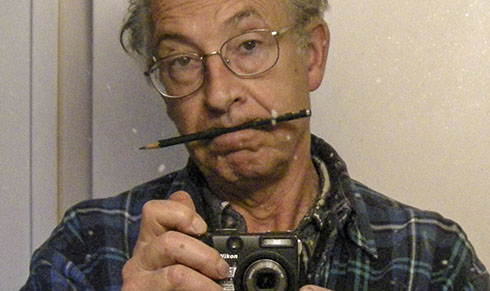

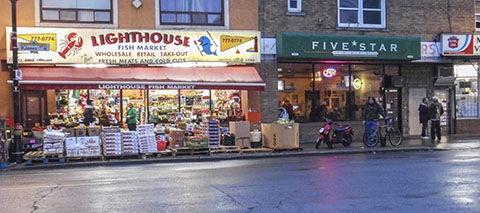

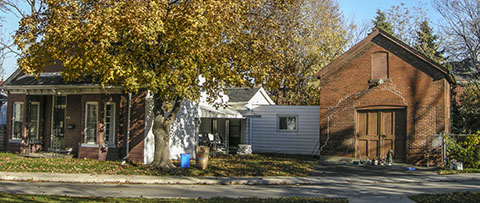



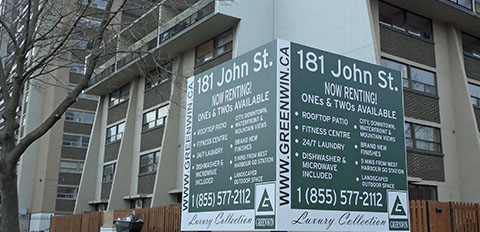

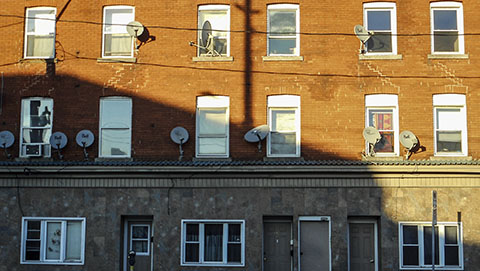
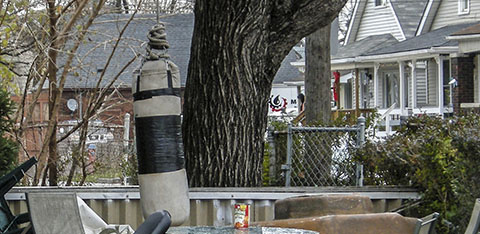
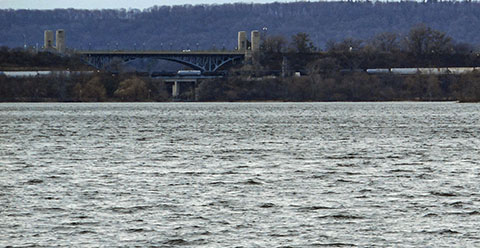


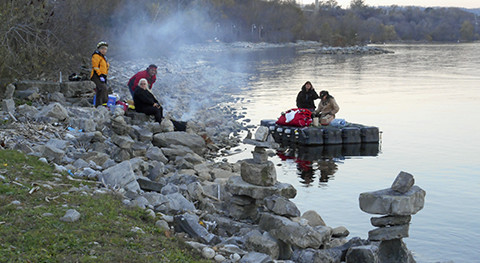
That was amazing to read.
Probably the most beautiful and honest essay I’ve ever read about living in Hamilton.
Really enjoyed the read. So well written. Happy to live in this city.
hamilton in a nutshell stand still and the world will come to you. great prose shawn
Unfortunately true, the degradation, decline of a city, once, very much, the industrial engine of Canada, where, when growing up, opportunity was the reward for even the minimum of ambition & effort – it was good for me. Selling your assets off to foreigners is sometimes a loser’s game.
A brilliant piece!
I don’t know if it was your wonderful prose, or the elegant efficiency of your summary of changes to my home town since I left as a young adult forty years ago… probably both.
Thank you for this.
You are gone now Sean, but with writing such as this you will be cherished forever, grew up in the James-Barton area sixty years ago, read your description of the change with tears.
We have lost a treasure, Godspeed on your journey.